Intel 12th-Gen Core Alder Lake Architectural Benchmark
A few months dorsum we investigated CPU core misconceptions, explaining how overall processor performance is affected non only by how many cores a CPU has, but other factors including cache levels and capacity. This was an interesting and unique wait at Intel's tenth-gen series in an commodity we titled "How CPU Cores & Enshroud Impact Gaming Performance." Basically what nosotros did was compare the Core i9-10900K, Core i7-10700K and Core i5-10600K at the same four.2 GHz frequency, with the same memory, memory timings, band bus frequency, and then on.
Then compared the iii CPUs with only vi cores / 12 threads enabled to run across how much of a difference the L3 cache chapters made when it came to gaming operation. After that, we compared that data to the 10700K and 10900K with 8 cores enabled, and finally the 10900K with all of its 10 cores turned on.
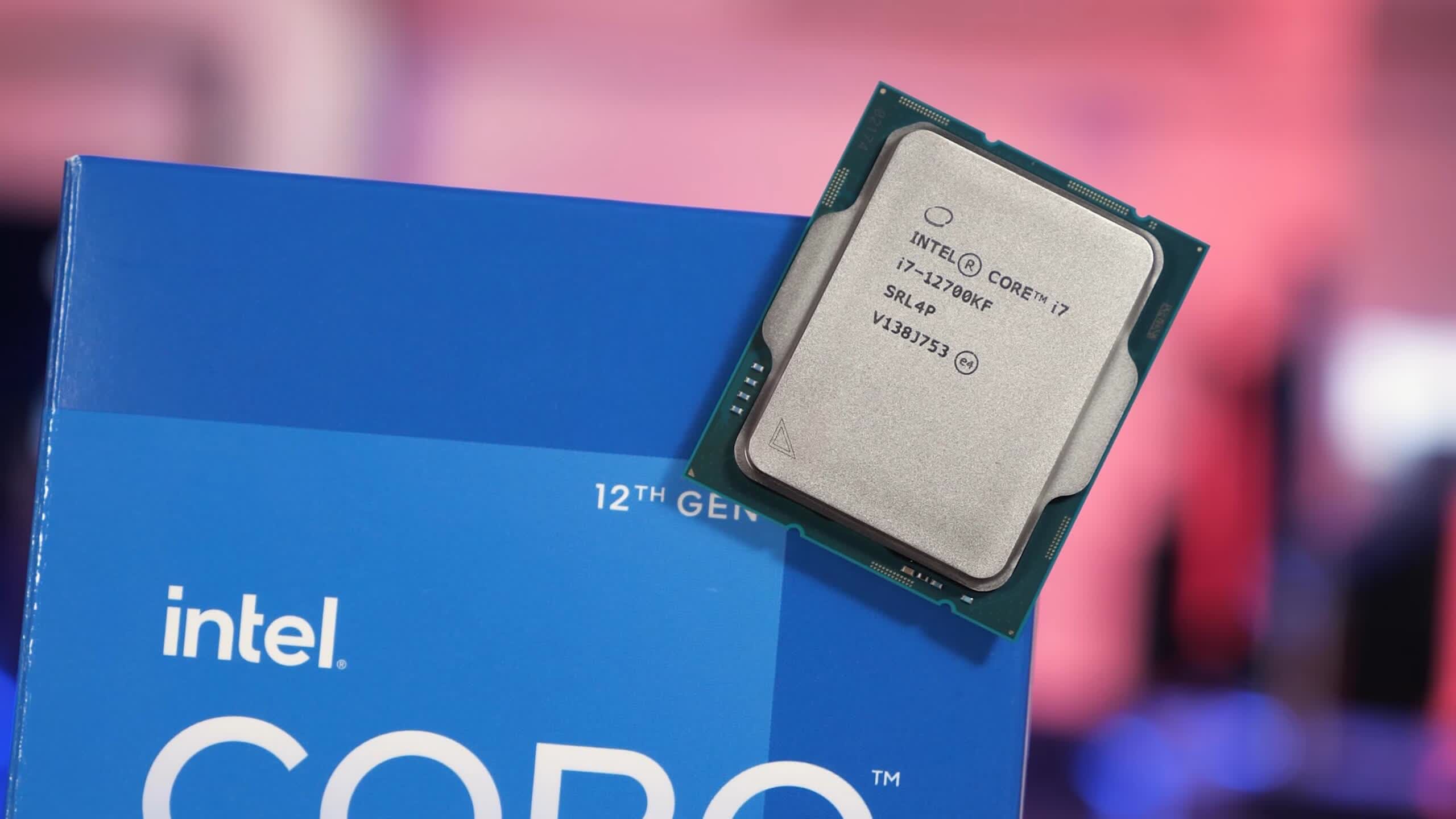
Long story short, information technology turns out that in almost all games, it's not the core count but the L3 cache chapters that is responsible for the improved performance seen beyond the college-terminate Intel parts. Of course, down the track the actress cores volition run across those higher-terminate parts pull even farther ahead, simply at least on today's games information technology's all near the L3 cache.
That investigation later morphed to a quad-core version where we included Cadre i3 models and a similar accept for AMD CPUs, where we looked at 10 years of AMD CPU progress and back to Intel for the same.
To wrap up that content, nosotros thought we should add the new Intel Alder Lake 12th-gen CPUs to the data puddle, then here we are, and information technology'southward been a more involved process than nosotros first imagined. Whereas all other CPU architectures had one, two, or mayhap three different configurations, twelfth-gen Cadre has iii per CPU.
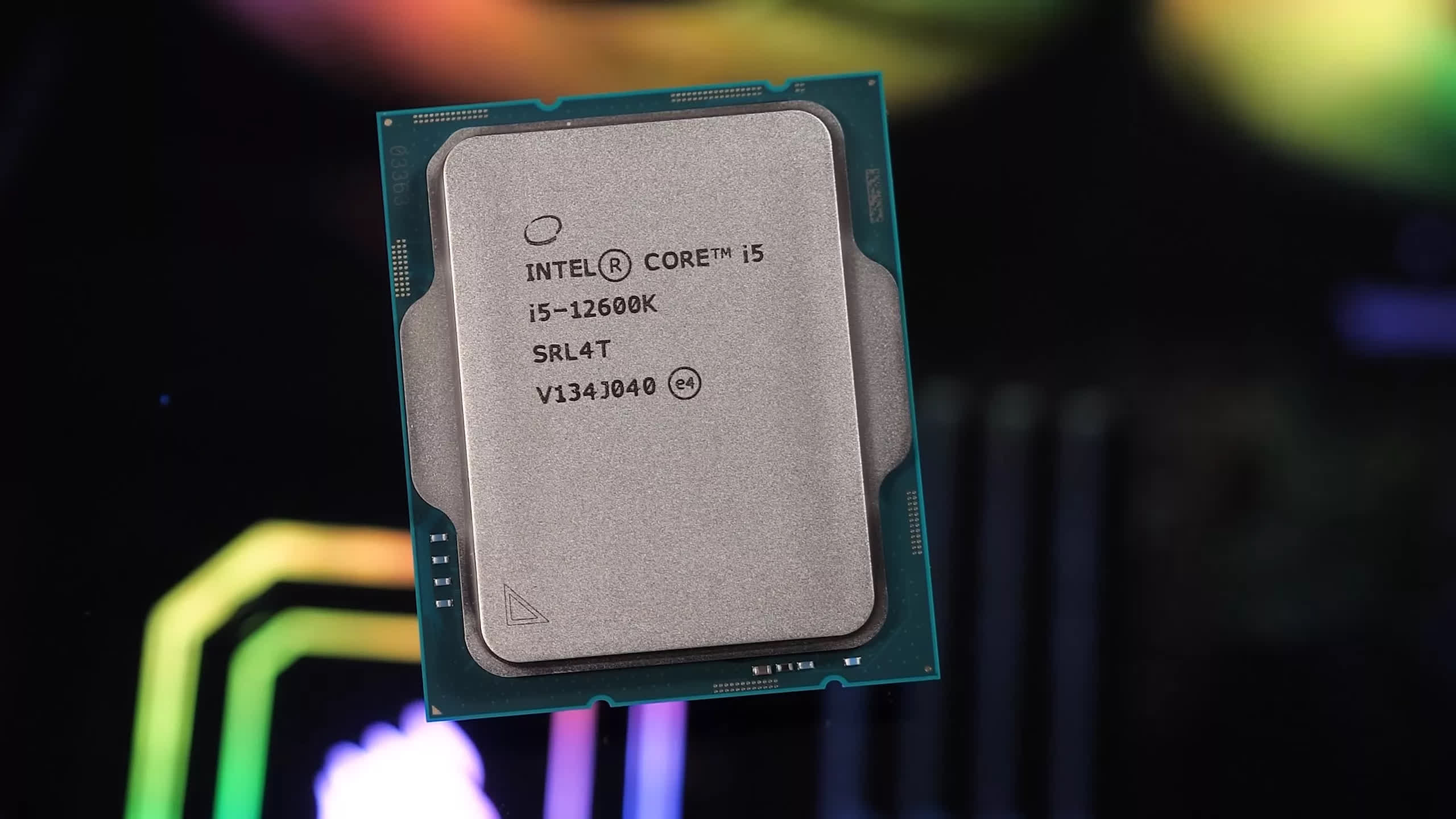
For example, the 10th-gen CPUs had a 20MB L3 enshroud with the Core i9 model, 16MB for i7 and 12MB for the i5 models, Alder Lake'southward cache capacity is segmented in a similar way, 20MB of L3 for the Core i5, 25MB for i7 and thirty MB for i9. But then on top of that we had to piece of work out what kind of core configuration we should exam. Four P-cores, Four E-cores or a mixture of both? The correct answer was of course all three configurations and that'southward provided the states with a wealth of juicy data to go over.
To be articulate, with iv P-cores enabled we were using Hyper-Threading, so this is a 4-core/8-thread configuration. Basically SMT was enabled when supported for all test configurations. This means because the E-cores don't support SMT the iv E-core configuration was 4 cores with 4 threads. And then the mixed configuration which featured 2 P-cores with two E-cores was a 4-core/6-thread configuration.

For testing nosotros've used the MSI Z690 Tomahawk Wi-Fi DDR4 as we wanted to use the same DDR4-3200 CL14 depression-latency retentiveness that was used to test all the other CPU architectures that support DDR4. In our testing, DDR5-6000 has not shown to be any faster for gaming, but nearly importantly nosotros wanted to keep the data every bit apples to apples as possible for this feature. Finally, all configurations were tested using the Radeon RX 6900 XT. Let's dive into the information.
Benchmarks
Starting with Rainbow Six Siege, there's quite a chip to go over, so carry with me. First let's just look at the Core i9-12900K, we see with iv P-cores enabled and locked at four.2 GHz that this configuration was good for 510 fps, just 3% faster than AMD'due south Zen iii architecture.
So with 2 P-cores and two E-cores enabled, performance dropped past xv% which is a adequately meaning reduction, and and so with but four Due east-cores enabled performance drops by a further 12% which isn't that much and not nearly the decline I was expecting. Quite shockingly, in this title four E-cores were able to match the performance of the Core i9-11900K, though the 11th-gen compages does suck in this championship, but yet I didn't expect to see any results like this.

When comparing the diverse twelfth-gen processors, we see that from the 12600K to the 12700K the additional L3 enshroud boosts operation by 4% with just the P-cores enabled, or 7% with just the Due east-cores. And then from the 12700K to the 12900K we're looking at a further v% functioning heave for the P-cores and a rather substantial ten% boost for the E-cores.
If we compare all the information we have nosotros come across that the 12th-gen CPUs with but their Eastward-cores enabled are comparable to Skylake as Intel claimed, at least when looking at the 12900K data. Information technology's also interesting to notation that with ii P-cores and two E-cores the 12900K was quite a bit slower than iv Zen 3 cores. So this suggests that a office like the 5950X will terminate up existence much faster than the 12900K for gaming, once games heavily utilize sixteen-cores... in like 10 years from now.
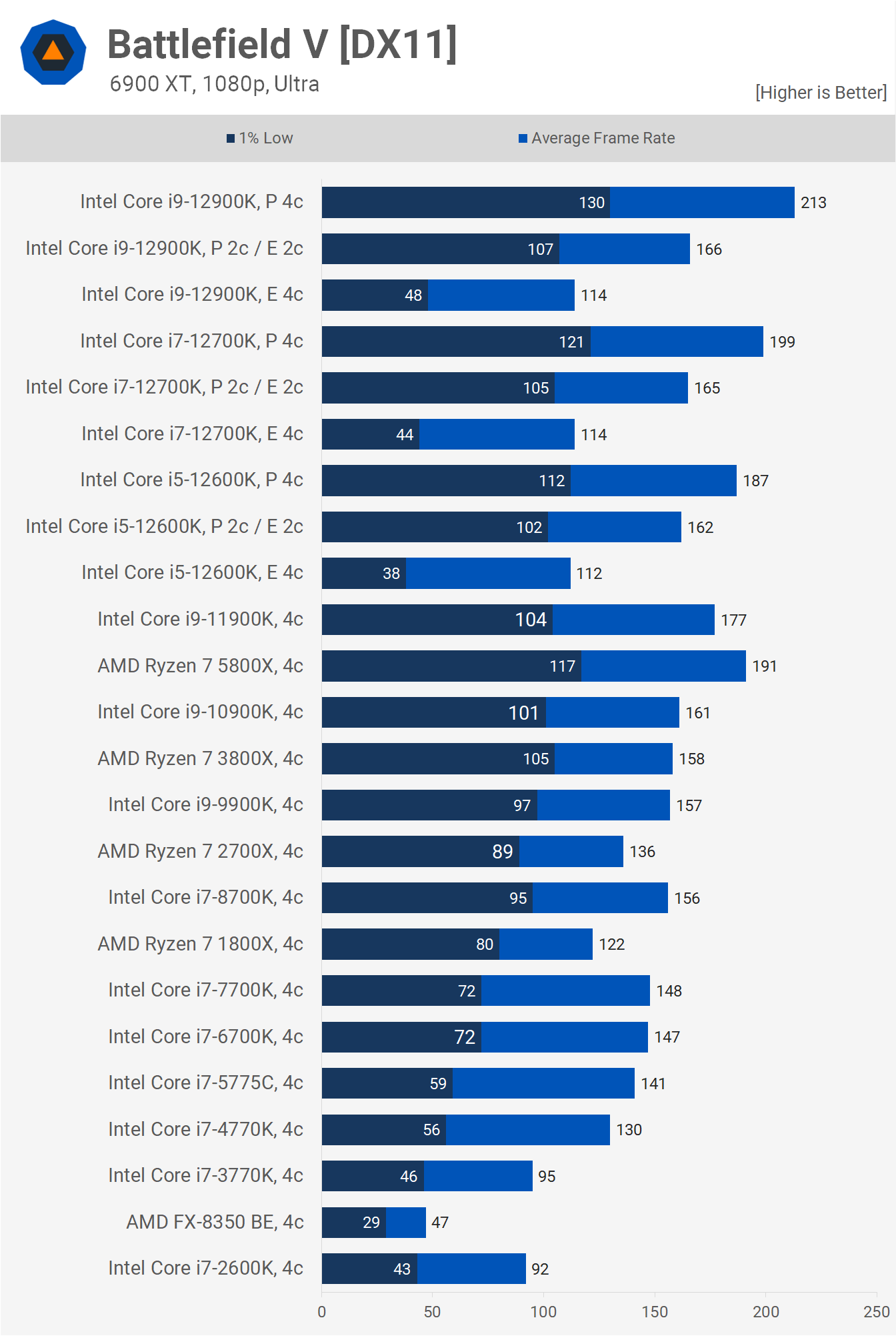
Moving onto Battlefield V results, we proceeds a few interesting insights. Kickoff, is that the E-cores suck big time in this title, not but is the boilerplate frame rate well-nigh halved when compared to what nosotros see when just using the P-cores, only the 1% low performance is shattered.
Nosotros're looking at a 22% reduction in operation with the 12900K when going from 4 P-cores to ii P-cores and ii E-cores. Then we meet a further 31% reduction when moving to Eastward-cores exclusively. Worse, that means the P-cores were 87% faster when looking at the average frame rate and 170% faster when looking at the 1% low. So those efficient cores are devastatingly dull in this game, and anything but efficient.
We as well come across that when the E-cores are enabled, the larger L3 cache capacity of the i7 and i9 models doesn't result in any actress performance, or at least very little in the style of actress performance. However with just the P-cores the 12700K was 6% faster than the 12600K and so the 12900K was vii% faster than the 12700K.
If nosotros compare that information with the rest of the CPU architectures we've tested, there'southward a few noteworthy comparisons to be made. When compared to Zen 3, Alder Lake is up to 12% faster, seen when comparing the 12900K with the 5800X. That said, the smaller 20MB cache of the 12600K meant information technology was 2% slower while the 25MB i7 was only 4% faster. Then information technology's that larger 30 MB L3 cache that gets the Cadre i9 firmly over the line.
That said, if we were to force Intel to apply the East-cores for gaming, we meet that the mixed two P-cores/2 E-cores configurations autumn behind Zen three. Then if you were to use E-cores exclusively, operation falls off a cliff and now nosotros're talking nowhere most Skylake levels of gaming performance, think more Sandy Bridge.

Moving on to F1 2022, we see that the E-cores are nowhere nearly equally bad as what we saw in Battlefield 5. We're looking at a 65% performance increment with the E-cores when looking at the 12900K and a 43% increment with the 12600K. The 12600K does appear to exist choked by its smaller 20 MB L3 enshroud given the 12700K was eighteen% faster when comparing P-cadre functioning, while the 12900K was just 4% faster than the 12700K.
Compared to Zen 3, Alder Lake is slower when limited to a 20 MB L3 cache, then up to 10% faster with 25 MB and 12% faster with 30 MB. Every bit for the E-core just configuration, Alder Lake is comparable to Ivy Bridge in F1 2022 and a long way behind Skylake, the 7700K for example was 33% faster than the 12900K's E-core configuration.

The NPC heavy Hitman 2 examination crushes the E-cores. This is similar to what was seen when testing with Battleground 5. Functioning across all three twelfth-gen parts is similar and that means nosotros're looking at a 41% performance improvement with 2 P-cores and 2 Eastward-cores compared to just using the E-cores. Actually, if nosotros wait at the 1% low performance, it'due south closer to a 134% jump, which is crazy.
So we see when just using the P-cores, the boilerplate frame rate is improved by 27% when compared to the mixed core configuration.
So again, if nosotros compare the E-core only configurations to older CPU architectures, nosotros see that performance is nowhere near Skylake. The i% low performance was every bit bad equally what nosotros saw with AMD'southward Bulldozer, while the boilerplate frame rate was much closer to Ivy Span than information technology was to Skylake.

Even in Horizon Zero Dawn, which isn't peculiarly CPU intensive, the Eastward-cadre but configurations struggled, though it will eat up iv-cores/4-threads, peculiarly if they're slow. If we look at one% depression functioning we encounter a 104% increase from 4 E-cores to 2 E-cores plus two P-cores, while going from the mixed core configuration to 4 P-cores merely boosted performance past a further 14%. Nosotros're also seeing very little functioning difference between the various L3 enshroud capacities in this game.
If nosotros compare with the older CPU architectures, we find that Alder Lakes Due east-cores aren't much better than AMD'due south FX series again. The 1% depression performance was almost identical and that means we're miles away from Skylake here.

Cyberpunk 2077 is yet another game where the Eastward-cores can't push i% lows to 60 fps, not even close. As a result we encounter a 100% performance comeback with the 12900K when comparing Due east-cores to the mixed core configuration, and and so only a further 12% heave when only using the P-cores. Interestingly, the mixed core configuration of the 12900K is quite good, whereas we practice see a noticeable drib off with the 12700K and 12600K.
Comparing with past CPU architectures, nosotros see that the Due east-cores are much slower than even first generation Ryzen, and worlds slower than Skylake. We're looking at Sandy Bridge level of performance here.

Finally, we have Shadow of the Tomb Raider and hither we see very niggling difference between the diverse Alder Lake CPUs, so the enshroud capacity has well-nigh no tangible influence hither, at to the lowest degree for these cadre configurations. Nosotros had plant previously with the 10th-gen serial that the larger L3 cache is of greater utility when more cores are available.
When compared to older CPU architectures, the Eastward-cores struggle with gaming on their ain, with average frame rate performance that'due south comparable to Ivy Span and 1% low performance that'due south but comparable to AMD's FX series. On the other mitt, when but using the P-cores, Alder Lake is a beast beating Zen 3 past 11% in this game.
Performance Summary
That was eye opening to say the to the lowest degree. Those East-cores don't practice well at gaming and there's a skilful reason why, which nosotros'll get to in a moment. For at present permit'southward take a look at the 7 game average we collected.
Across the seven games tested we see that the 12900K was just iii% faster than the 12700K with just the P-cores active, and 8% faster than the 12600K and those margins are entirely down to the difference in L3 cache chapters. The margins with two P-cores and ii Eastward-cores enabled are similar and the same is also true with just four E-cores.

Of form, the interesting story is the departure in operation between the diverse core configurations on the same CPU. So take the 12900K, for example, we saw a 44% increase in average frame charge per unit when going from 4 E-cores to a mix of P and E cores, and an 81% increase in one% low functioning. Then from the mix of P and E cores to just P-cores, the average frame rate was boosted by a farther 20% and the 1% depression by 21%.
Obviously, you lot'd never run a 12th-gen CPU with only the E-cores, which would reduce performance some ~xx%, but permit's go deeper in the analysis in our determination...
What Nosotros Learned
Intel'due south 12th-gen hybrid cadre pattern is really interesting and information technology does bring some obvious benefits for productivity workloads and volition no doubt prove very beneficial in the mobile infinite. Now you're probably thinking, "sure, I saw the benchmarks, I get that E-cores don't perform well for gaming on their own, merely why?"
The respond is unproblematic, and information technology'due south the same reason why get-go-gen Ryzen was downwards on Intel for gaming when matched at the aforementioned core count. Core-to-cadre latency is very weak -- we're talking about a 54% increase on average.
Typically, P-cores take 37ns to communicate with 1 another whereas the E-cores accept 57ns and this cripples performance in games and for whatsoever other workload that relies heavily on core crosstalk.

The reason Intel's limited interconnect between the Due east-cores is to make them more efficient, both in terms of ability usage and the amount of die infinite they require. For sequential workloads like what we see with rendering, for example, where at that place's very little cadre-to-core advice, the E-cores work well and this is why Intel used SPECrate2017 to make their Skylake efficiency claim.
If we expect at the broader picture, the hybrid pattern even on the desktop makes sense, at least for Intel. A part similar the Core i9-12900K can merits to house "16 full" cores with 24-threads, because technically that'due south what information technology packs, even if not all cores are equal.
On newspaper, the 12900K looks comparable to the Ryzen 9 5950X, and when put to the examination in applications that can leverage these core-heavy desktop parts, the 12900K nonetheless looks great, as the Due east-core weakness that is cadre-to-core communication isn't emphasized by those workloads, think Blender as i such case.
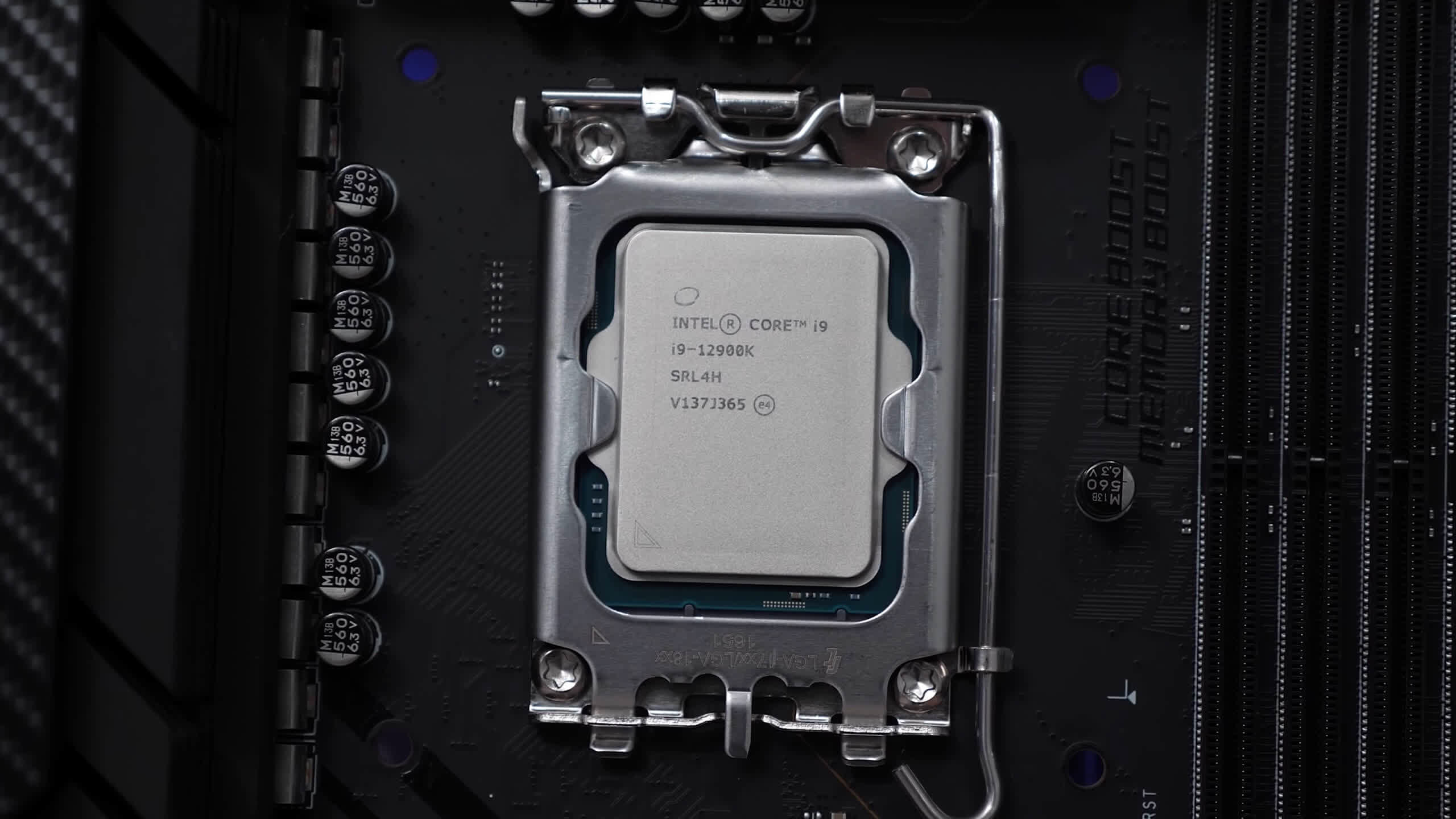
Then when information technology comes to gaming, the 12900K still shines because not a single game requires more 8 Alder Lakes P-cores. Even if a game tin spread the load across xvi cores, that won't be an issue. Even in the case of the 12600K, its cores are more than powerful enough to bargain with the load. If they couldn't, the game would just be playable using a loftier-end CPU like the 12900K or 5950X, and that's non going to happen this decade.
Now obviously, you'd never run a 12th-gen CPU with just the Eastward-cores, just there will be a point in time when you lot'll have to call on the East-cores for gaming and this could reduce functioning by xx% or more, at to the lowest degree based on what we've seen here. But over again I don't expect that time volition come within the realistic lifespan of this serial.
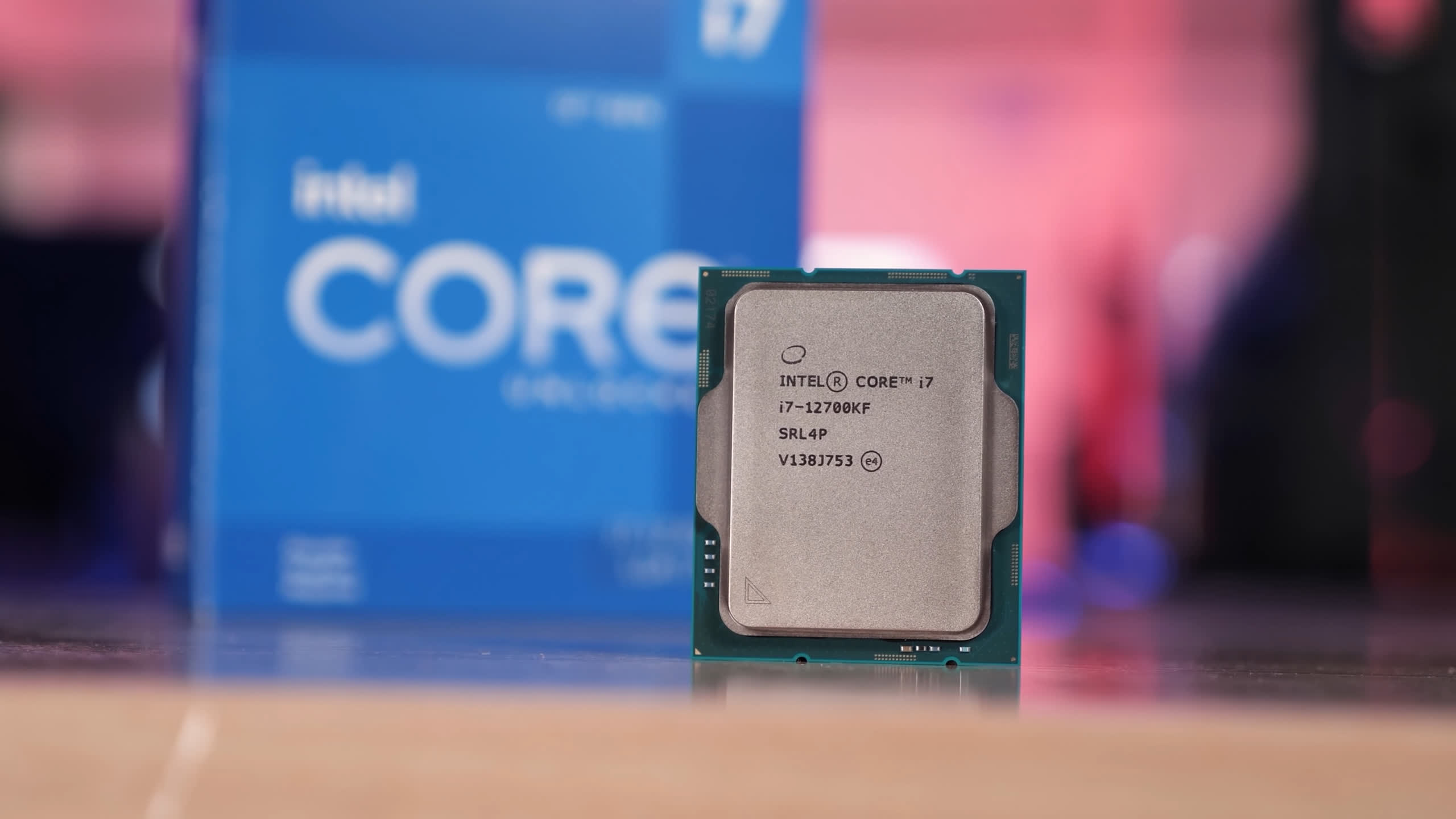
Another reason why Eastward-cores suck for gamers is the compatibility effect with DRM, and I ran into that with this benchmark test. Previously I'd tested all CPU architectures using Lookout man Dogs Legion and Assassin'southward Creed Valhalla, but both games failed for this testing. Lookout man Dogs Legion worked with but E-cores, or just P-cores, simply the mix crashed the game which is strange equally stock the 12th-gen CPUs work just fine. Then Assassin's Creed Valhalla failed to load due to the DRM detection issue with the hybrid 12th-gen architecture.
In brusque, the E-cores are a mistake for gaming, and if called upon they volition reduce frame rates. And so for gamers the 12900K and 12700K are eight-core/xvi-thread CPUs and nothing more. The E-cores might exist able to assistance with background tasks, but frankly on the desktop they'd exist better taken care of past 2 more P-cores. There is no argument gamers can make for the existence of E-cores, you'd ever be much amend off replacing them with 2 extra P-cores.
Shopping Shortcuts:
- Intel Cadre i7-12700KF on Amazon
- Intel Core i7-12700K on Amazon
- Intel Core i9-12900K on Amazon
- Intel Core i5-12600K on Amazon
- AMD Ryzen 5 5600X on Amazon
- AMD Ryzen 9 5950X on Amazon
- AMD Ryzen 7 5800X on Amazon
Source: https://www.techspot.com/news/92444-intel-12th-gen-core-alder-lake-architectural-benchmark.html
Posted by: bennettnetaid.blogspot.com


0 Response to "Intel 12th-Gen Core Alder Lake Architectural Benchmark"
Post a Comment